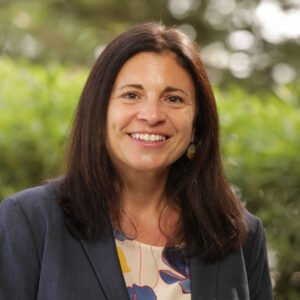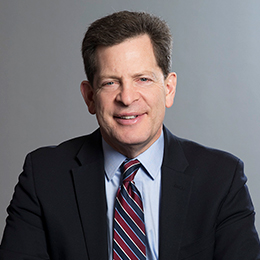
By Ashley Lomery, Vice President, Grenzebach Glier and Associates (GG+A)
 By Eric Snoek, Senior Vice President, Grenzebach Glier and Associates (GG+A)
By Eric Snoek, Senior Vice President, Grenzebach Glier and Associates (GG+A)
With the widely publicized fluctuation in giving reflected in the most recent Giving USA report, donor retention is critical for organizations of all sizes and missions. Have you ever heard the saying, “Your best prospects are your current donors”? This is especially true in today’s climate.
While fundraisers devote much of their energy to the cultivation activities leading up to a solicitation, it’s what happens after a gift is secured and put to use that can determine a donor’s inclination to continue giving to your organization. (Consider this controversial op-ed that appeared in The Chronicle of Philanthropy and its resulting critiques.) As nonprofits grapple with financial and personnel challenges, it can be tempting to shift resources away from stewardship, but arguably, it must remain a top priority.
Whether you’re running a large, complex fundraising operation, scaling a small or midsize program, or just getting started, high-impact stewardship is integral to building and sustaining a culture of philanthropic support for your institution.
Enhance Stewardship on Any Budget
While there may be a perception that stewardship must be expensive to be effective, this is not the case. There are many ways to steward donors with simply your time and effort.
Evaluate whether your existing technology, internal systems, and processes of gathering and sharing data among stakeholder groups enhances or inhibits your ability to effectively steward your donors. While advancement and development teams play a key role in the stewardship of gifts – providing everything from research, to data, analytics, and storytelling – stewardship does not need to be siloed to the Advancement Services or Donor Relations offices of an institution. Rather, these groups can take the lead in creating a strong culture of stewardship institution-wide, proactively educating colleagues, and serving as a collaborative, strategic partner in stewardship activities.
Here are a few examples:
Group outreach. Think about a large cohort of donors supporting a specific priority and create a short thank you video from beneficiaries, accompanied by a brief message from you or a program director. Alternatively, host a thank-you webinar.
Custom templates. Design a thank-you letter template that can easily be modified and sent to different donors as needed.
In-person visits. Consider donors’ personal interests outside of their area of giving and align these with what is taking place at your institution to deepen engagement. Invite them to lecture series, performances, exhibitions, athletic contests, or other events. If donors have expertise related to (or outside of) their gift focus, invite them to speak to a class or other constituents.
Volunteer connections. Don’t overlook engaging your volunteers in stewardship efforts – asking them to make thank-you calls or send handwritten notes will likely be rewarding for them and may also spark further engagement from your supporters.
Be creative! Recognize donors in a way that is meaningful and furthers their commitment but is also sustainable for your team.
Boost Donor Retention
Think of providing a note of thanks and formal gift receipt as just the beginning; a best practice is to understand stewardship as a process of keeping donors interested and informed about what your organization is achieving – and helping them to feel a part of it.
One of the primary reasons donors decide to stop giving is due to lack of meaningful information or a feeling that their giving is not appreciated, and this is corroborated by GG+A’s research across institutions. Brief surveys of your donors can help gauge their satisfaction with each stage of the giving process, including the initial ask, the transaction itself, recognition, and follow-up communications. In data from our Donor Experience Scorecard (which is generated from such surveys), results consistently indicate that understanding the impact of giving is important for donors at all levels.
Moreover, transparency in how funds are used goes a long way in enhancing the relationship with your donors and sends a persuasive message to those contemplating a gift. Ensure the information you track about donors and their giving, as well as the use of gifted funds, is current and consistent.
Consider a donor who made a major gift to establish an immediate use scholarship fund. He was clear with the gift officer that for him to make a next gift after his multi-year pledge was fulfilled, he wanted to ensure his contribution was used as intended, and to learn about the student recipients and how they benefited from the scholarship. In addition to thank you letters, he asked for an academic year-end report from the students. Fulfilling these stewardship requests – along with providing clear financial reporting and updates on the scholarship awarding process along the way – encouraged this donor not only to renew, but also to increase his support.
Elevate Mid-Level Donors to Higher Levels of Giving
For institutions that structure giving around memberships (such as arts and cultural institutions), it can be easy to confuse membership benefits with stewardship, since both are typically organized to ensure donors at various giving levels are treated similarly and equitably. But stewardship is not a quid pro quo for a gift. It is a genuine effort to thank, educate, and influence donors in ways that encourage them to give again.
Reflect on how you might use an event as stewardship. Do you want someone to better understand the success of a program? Invite her to come to the annual event as your guest. Let her experience what it’s like to be part of the group that made something wonderful possible. And then be sure to ask her if she would like to make the commitment necessary to be a part of the group.
While it’s true that stewardship materials and experiences are generally developed for specific groups of people (e.g., donors at a certain dollar level) there is no reason you can’t share those materials with those you hope to persuade to give at that level.
Build A Pipeline for Major Gifts
Stewardship plays a critical role in pipeline development, particularly for annual and leadership annual giving supporters. Technology and digital outreach, from emails to social media, can be especially useful for communicating impact to large groups of supporters. You can use these tools to seek feedback from donors, obtain important insights, and identify those who wish to have even greater impact through their philanthropic support.
Do donors know what to expect from your organization when they give? And is there a commitment across your organization to share – with clarity and regularity – the impact of philanthropy?
Again, constituents surprise us time and again with the information they are willing to share in a survey, even when their responses are not anonymous. GG+A’s SurveyLab regularly conducts surveys for organizations that are seeking to better understand their constituents, deepen their prospect pools, and glean donor perceptions. Results from these surveys often provide valuable data points to help shape prospect development and portfolio strategies.
Strengthen Volunteerism
It’s often harder to recruit a volunteer than it is to find a new funder for a project. People who contribute their time and energy to advocacy efforts, to strengthening your institution in the community, or to helping deliver services, are a vital part of your success. It may be difficult to quantify or value their contributions, but that doesn’t make their efforts any less important.
There’s no rulebook for stewarding volunteers – no expectation of a mailed receipt, an email, or language to satisfy a claim made to the IRS. Rather, volunteer stewardship more often resembles acts of kindness.
In addition to inviting and publicly acknowledging volunteers at official events, sharing a copy of a picture taken while the volunteer was serving, sending a thank-you letter to a partner or spouse for “loaning” their loved one’s service, or delivering a piece of “swag” or some other small gift representing your institution can enhance your stewardship, and increase the likelihood your volunteers will continue their support.
Equip Your Major and Principal Gift Officers
Incorporate touchpoints into major and principal gifts strategies and thoughtfully personalize your interactions with your donors. Advancement staff who are responsible for stewardship should partner with frontline fundraisers to create custom stewardship reports for top donors and prospects. Additionally, formalized documentation for impact and financial reporting should be easily accessible to all appropriate staff, with step-by-step instructions on how to produce this reporting.
Gift officers should likewise be trained to consider stewardship as part of their jobs; while some may instinctually steward donors and do it very well, others may need encouragement and additional coaching. Along with assigned metrics, provide newer gift officers with practical ideas for stewarding donors’ gifts in customized ways. This helps ensure it becomes part of their day-to-day work.
Here are just a few ways gift officers can take initiative, with the encouragement and support of their manager or leadership team:
- Endowed scholarship? Beyond a standard thank you letter, consider inviting a donor to meet recipients virtually or over a casual lunch or coffee.
- Programmatic fund? Include donors in a program event or activity, create a thank you video or photo album, and partner with the program leader to share regular updates.
- Faculty chair? Introduce donors to the new chair early on so a relationship may be forged and so updates become natural and organic.
As part of your stewardship program, conduct regular, formal assessments with your donors to assess the impact of stewardship activities and ensure processes and systems are in place to cultivate these relationships. The results of these assessments will help you revise and adjust your program with strategic goals in mind.


